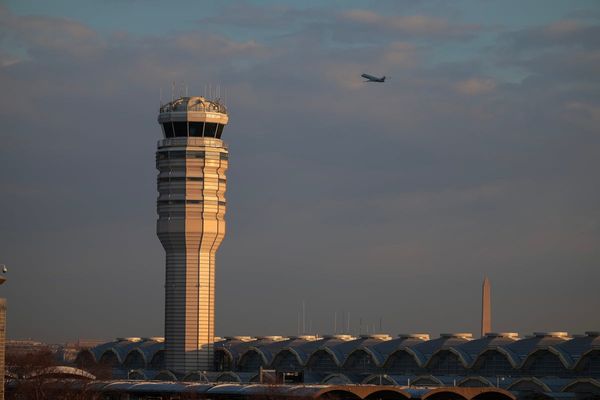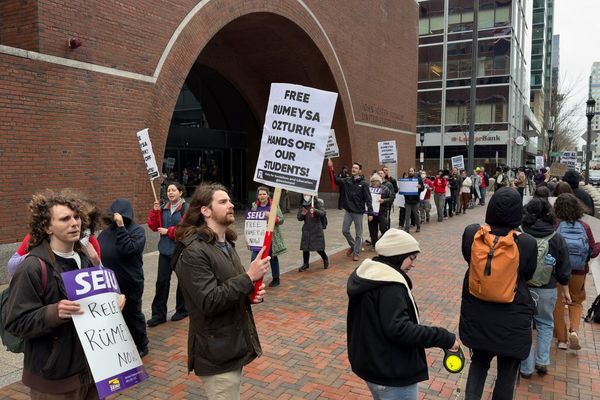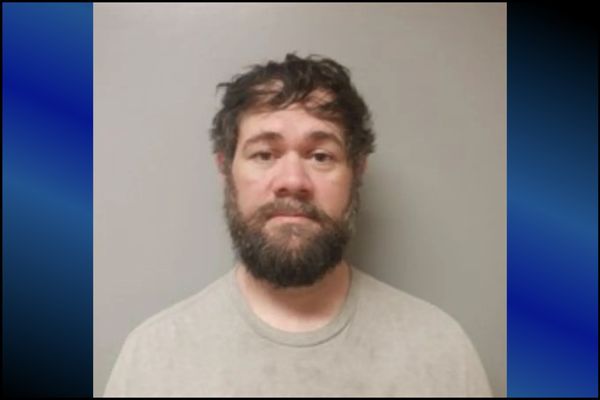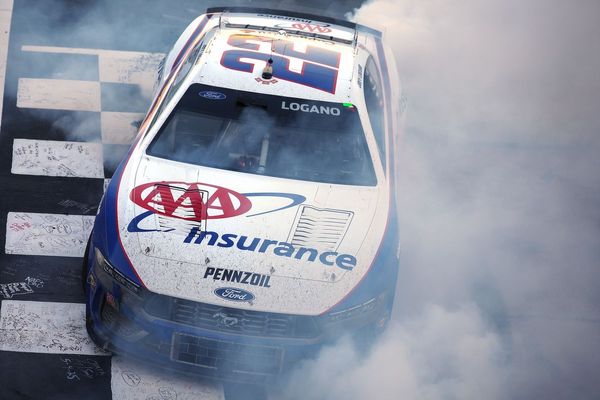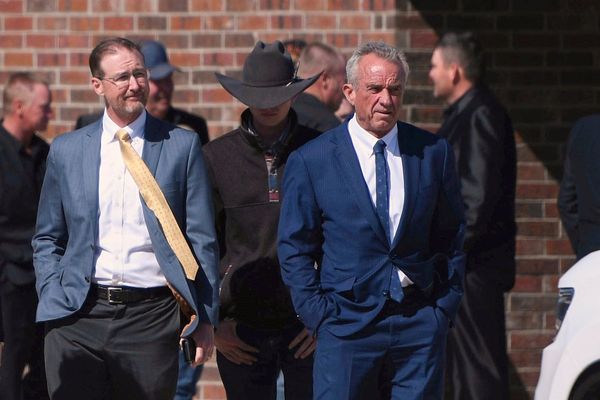
Nothing much remains of the place where Saurabh Chaudhary took his first aim. It used to be a rough, single-storey structure with a tin roof. Now there’s just debris, though the wall where targets were fixed still stands, bearing its bullet scars.
It is here in Binauli, a small village in UP’s sugarcane belt, roughly 70km from New Delhi, that Saurabh would stand motionless for hours, sweating under the hot tin roof of a makeshift 10m range.
It is a world away from where Saurabh is now: the world record holder in 10m pistol, India’s youngest gold medallist at the Asian Games (last year, when he was 16), and the country’s brightest prospect at the 2020 Olympics.
Saurabh’s bullet-speed rise has fired the imagination of girls and boys not even in their teens. They flock to Saurabh’s coach Amit Sheoran’s new range; still a small flat room, but larger than the last scratchy place, large enough to have ten firing points instead of five, and two fans for much needed relief.

It is not nearly big enough for the crowd that gathers, so many go across the thin lane lined with small grocery shops to the large temple. Here, under the shade of large trees, they do “dry training”: just standing in the firing posture, half-a-brick tied to their wrist to add resistance.
You will find Ashi, a 13-year-old with a big smile and hair tied in a tight, high bun, sweating through her brows but keeping her eyes wide open and on an imaginary target, painfully holding her shooting arm stiffly out, like some young trainee monk in a shaolin movie.
Ashi, who comes from Moradabad—160km from Binauli—had first wanted to be a wrestler. After Sakshi Malik’s medal at the 2016 Rio Games, she joined Chotu Ram Stadium in Rohtak, where Sakshi had begun her career, but soon realized wrestling was not for her. Around this time, Saurabh won his Asian Games medal, and Ashi found a new role model.
“I came with my father and met Saurabh,” she says. “He gave me so much confidence and told me to take up shooting. Me and my brother joined the centre from March.”
To do this, Ashi and her brother had to leave home. They stay with a relative near Binauli. Ashi is the only girl in Sheoran’s school right now.
“I had to take her after seeing the way she is shooting,” Sheoran says. “I won’t be surprised if she makes it to the national team very soon.”
Sheoran, a national level shooter, has been coaching since 2009. His trainees mostly came from nearby places in Baghpat, with the ambition of getting into Army. That was till he encountered the rare talent in Saurabh.
Around the same time a restless young girl in Jhajjar, in Haryana, had picked up an air pistol after trying out several sports—from martial arts to skating and boxing. Her father, the chief engineer of a ship, extracted a promise from his daughter. That the next sport she picked she would have to stick with it for two years. It was shooting. She started training at the 10m range at her school, in the village Goria, in Jhajjar, Haryana. Little did Ram Kishan Bhaker know that his restless teenage daughter would find her calling in a sport that demands the patience of a monk. That was in 2016. In 2018 the 16-year-old Manu Bhaker broke the Commonwealth Games record, won the gold in the Youth Olympic Games, and became the youngest Indian to win a gold at a shooting World Cup.
Teenage monsters
This is where Indian shooting stands right now: A bunch of teenage prodigies, fearless, irreverent, and wildly skilled, flooding the lanes of ranges across the country, getting spotted, getting picked up for international tournaments, and once there, shooting down world record scores and gold medals.
At the last national championship in 2018, there was a 13-year-old gold medallist—Esha Singh—in the senior category.
Riding on this powerful adolescent wave, India has challenged traditional shooting powerhouses like China and Russia.

In ISSF World Cups till date, India occupies the 20th place with 80 medals. China is on top with 818, followed by USA with 553. However, in Junior World Cups from 2016-19, India have won 107 medals, ahead of China’s 79 and Russia’s 62.
From last year, these young shooters are being thrown into the deep end, with spectacular results. In three ISSF (Pistol/Rifle) World Cups this year, Indian shooters have topped the medals tally. Eight quota places for 2020 Olympics have been confirmed so far. In the last two years, 13 Indian shooters have either shot new world record scores or equalled them (senior and junior combined). In fact, the competition at the domestic level is so unusually high, that many of these world record scores were breached multiple times at home.
Heading towards the 2020 Tokyo Olympics, India have taken a giant surge forward. Former top shooters and coaches don’t want to say this on record for fear of jinxing it, but they all believe that a historic medal haul at the Olympics is around the corner.
An end, a beginning
The spark was not a medal, but the lack of one.
At the 2016 Olympics in Rio, the Indian contingent of shooters failed to make the podium for the first time in three Olympics.
It led to some soul-searching from the sport’s governing body. India’s only individual Olympic gold medallist, Abhinav Bindra, was asked to dig into how Indian shooting could improve. Several changes were made based on his recommendations. Two high-performance managers were appointed in 2017, both accomplished former shooters, to constantly monitor the international team. Coaches from the various national camps—both senior and junior—were asked to send in performance reports to the managers, who would then analyse and recommend training changes.
Former Asian and Commonwealth Games medallist Suma Shirur, who had become a coach, was roped in as high-performance coach of the junior national squad for rifle shooters last year.
“Earlier, we did not have knowledge in the system,” says Olympic medallist rifle shooter Gagan Narang, one of India’s most decorated shooters. “Now we have all the knowledge, good access to facilities as well. Also, earlier people would start shooting only when they are 15-16, now they start at 10-11 years and by 16, they are already taking part in the national championships.”
There already existed an elaborately tiered structure of competitions for all age groups, but the shooting federation changed its selection policy to the national team to make it transparent, and based on the most recent performances of a shooter. Anyone could go online and see exactly where he or she stood on the list, what they needed to do, and how soon they needed to do it.
A new belief began to develop: You could start shooting today, and you can be in the national team within a year.
Teach your children well
But if you are a young girl or boy looking to explore the sport, where do you go to start shooting?
“Part of the credit goes to unknown clubs, unknown academies, unknown coaches, in bringing up this strong talent pool,” says Joydeep Karmakar, who missed an Olympic medal in 50m rifle prone by 1.9 points in 2012 in London, before opening his own academy in Kolkata in 2013.
Unknown club, unknown coach—that was how Saurabh and Manu came into the sport, but Karmakar also belongs to a generation of well-known shooters who have become the guiding force behind the revolution unfolding now. His own academy has produced Mehuli Ghosh, 18, a medallist at the 2018 World Championships and the Commonwealth Games.
Karmakar’s generation owes its success to two Hungarian coaches—Laszlo Szucsak and Tibor Gonczol. Tibor came to India in 1991 and spent 12 years as the pistol coach, working with talents like Jaspal Rana and Samaresh Jung.
Laszlo raised the rifle brigade with great care in the late 90s, schooling the likes of Abhinav Bindra, Gagan Narang, Anjali Bhagwat, Deepali Deshpande and Suma. Each of these shooters is now paying it forward. Deepali and Jaspal are chief coaches of the junior rifle and pistol teams and nurtured the talent pool since NRAI started the junior programme was started in 2015; Samaresh is the high-performance director for the senior pistol team; Gagan began a shooting academy called Gun for Glory in 2011 with a single range in Pune, and now runs 16 centres across eight cities in India, packed with coaches, and access to guns, pellets, and other equipment for hundreds of young girls and boys wanting to learn the sport.
“What we see today is the work of one generation—our generation,” says Suma, who reached the final of the 2004 Olympics. “When we came into the sport we were just a handful. Nobody knew about shooting as a sport. The game has grown with us, and over the years the talent pool we work with has increased. It has grown 10 times.”
Suma recalls how after she started winning medals in international meets, the local MLA from her area—Panvel, in Navi Mumbai—decided to build a range so that she doesn’t have to travel long distances for practice. Once the range was opened in 2006, Suma realized that there was no one with the expertise to maintain the range, so she began to do it herself.
“That is how I got into coaching,” she says, “because there was nobody to take care of the range.”
The Lakshya Shooting Club is now run by Suma and her husband Siddharth, and she also works as a consultant with the state-run Madhya Pradesh Shooting Academy.
“To grow in the sport at that time one needed to go to Germany, or Hungary and procure expensive equipment,” Suma says. “I realised that the biggest hindrance to the growth of the sport was the ease of buying shooting essentials, and coaching. I wanted to reach out to the shooters and also give back to the system that made me.”
As more centres opened, more people came to the sport; as the interest in shooting increased, so did the demand for more centres.
Rakesh Singh Thakur is a former national level shooter who opened a 10m shooting range in Ballabgarh, Faridabad in 2012 as a small business.
“You don’t need much to have a 10m range with decent facilities,” he says. “I spent around Rs 4-5 lakh and slowly increased the facility.”
When Rakesh began, there were only two other ranges in Faridabad, one of the most populous satellite cities in the National Capital Region. Now there are twenty two.
“The sport has completely changed in the last 3-4 years. The growth of private academies has been huge,” says Rakesh.
Ambitions too have changed; Rakesh’s range is no longer just recreational. The 50 students here have competitive dreams. Manish Narwal, a 17-year-old para athlete has already begun realizing his; he won a silver in 10m air pistol at the Para World Cup in Croatia in July, and qualified for the Tokyo Paralympics in 2020 with a haul of three gold and a bronze at last year’s World Shooting Para-Sport in France.
“We work at the ground level. The international shooters are working at the top level,” says Rakesh. “Once these kids come from our academies to national camps, they get more technical insights through the top coaches. We struggled because there was no coach to correct us. Today’s kids are getting good facilities and shooting world class scores.”
Gagan says that shooters come to the ranges at his Gun for Glory centres “with a purpose”.
“Most of them want to shoot medals,” he says. “Gone are the days when kids would do shooting for college admissions. Now the purpose is greater. The pool of shooters has grown, the support system is wider, the competition is intense. Only the best survive the system.”
Government-run facilities have stepped up too. The Madhya Pradesh Shooting Academy in Bhopal, where Suma works as a consultant, and which runs a programme for children between 13 and 17, is a fully paid-for facility. Every year, they conduct a summer camp and a trial at their ranges from which potential shooters are picked for a residential programme where everything from stay, food, coaching, guns, and bullets to entry fees and travel expenses for competitions are taken care of. Athletes stay in the programme as long as they meet certain prescribed standard in the sport; every year a few get dropped, and some new students are given entry.
“When it started in 2007, there used to be 10-15 children for the summer camp,” says former shooter Sunita Lakhan, one of the coaches in the academy. “The scene has changed completely. Now the numbers have risen to around 250 and we are thinking of opening feeder centres because all of them do not get a chance.”
These numbers are reflected at the national shooting championships. In 2008, when Bindra won his Olympic gold, the nationals featured roughly 1300 shooters, both seniors and juniors. In 2017, that number shot up by almost five times to 5431; 3015 of them were juniors.
A day at the range
To get a taste of this shooting revolution, just spend a day at a premier domestic competition. At the Kumar Surendra Singh Memorial competition in June, the 10m range at Delhi’s Karni Singh shooting complex has the energy and vibe of a carnival. Thirteen, 14, 15-year-olds running around, lugging gun cases as large as them. Shooters getting into their stiff jackets. The air abuzz with nervous excitement, conversations, last-minute instructions.
They have come from everywhere: from Sheoran’s tin-shed range to Gagan’s state-of-the-art academy; from a school in a small village in Jhajjar to Karmakar’s Kolkata academy; from the residential programme in Bhopal to the sleek ranges of Panvel. They want a crack at the national team.
As the competition for the 10m rifle qualification begins, all sounds inside the range cease except the pop-pop of pellets being shot. Parents sit anxiously in the gallery, their eyes moving from their children to the electronic scoreboard; of the 325 competitors in the qualification, 224 are juniors.
At lane 14 stands Akshraj Singh Gohil, all of 13. His gaze is fixed on the target. He looks calm and composed, his body held still in that peculiar, angular stance of the rifle-shooter. He squeezes off the last shot of his match. He looks up at the scoreboard; he’s got a 10.4. He is happy with it, he turns and looks at his parents and flashes a wide grin.
At the other end of the large hall, at lane 77, stands one of the finest rifle shooters in the world, Gagan Narang. He takes his time, chewing his lower lip, and settling into his stance.
Akshraj is from Ujjain, but goes to a boarding school in Indore. He’s already competed in his first nationals, last year, where the pool was even bigger—700 shooters.
“I love shooting,” he says. “Yes, you have to concentrate, but it’s not that difficult. I scored 583. I have won two bronze medals in school games. Next year I will compete in Khelo India.”
Akshraj’s school in Indore has a 10m, 25m and 50m range.
“I practice every day for 2-3 hours,” he says. “My father used to shoot and I want to take up the sport professionally.”
Brothers Aditya and Aryender Pratap Singh Katwal too share Akshraj’s ambition. Their parents have come from Shimla to watch their sons in a national competition.
“They have given their 10th board this year. We wanted our children to take up some sports, someone told us to put them in an individual sport where there is both name and recognition if you do well. They played cricket but did not like it,” says mother Anuradha Katwal, who is a teacher.
The Katwal brothers started training in a government facility in Shimla.
“The targets are not electronic but manual. After coming from school, they go to the range. We are a middle class family and academics are equally important for us. We want them to get jobs too,” says Anuradha.
The brothers share one rifle; the Walther weapon cost the parents Rs 2.3 lakh.
“Both are competing in nationals for the second year. Once you are a national level shooter you get the GST exemption, so we got a concession of around Rs 70,000. Before the competition we informed the organizers to put them in separate relays because they will use the same gun.”
The family is now looking to shift to Chandigarh to explore better facilities for shooting. “We need to provide them good training. Yes it will be costly and there are difficulties, but we will manage somehow,” says Anuradha.
